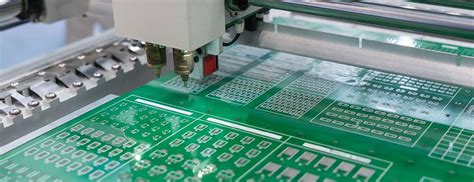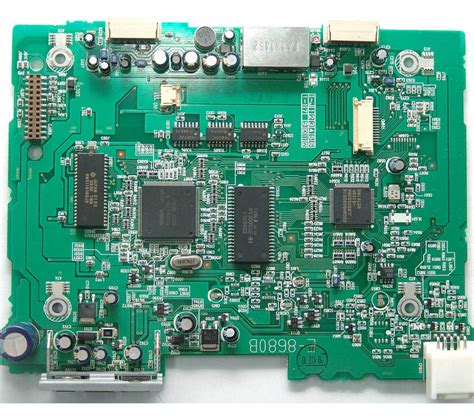Ten Misunderstandings in Circuit Reliability Design
Circuit design not only has many techniques, but also many misunderstandings. This article will introduce ten misunderstandings in circuit stability design.
Misunderstanding 1: Product failure = unreliable product
When a product has a problem, it is sometimes not a problem with R&D. There was a case where equipment for medium-developed regions in China was exported to Colombia because it was used well in China, but it frequently failed there. The reason for the failure was that the altitude of medium-developed regions in mainland China was relatively low, so the air tightness of the equipment was challenged in high-altitude areas, and the pressure difference between the inside and outside of the equipment increased, and the leakage rate increased.
When the project was established, only low altitude was considered, so there was no problem with other people’s design. Your boss asked for it like this. Whoever made the decision to export this model to Colombia is the culprit. If the boss in charge of R&D participated in the decision and did not raise any objections, he would be the biggest sinner. After all, it is forgivable for the sales executives to make decisions without understanding technology, but the mistakes of the technical vice president are incompetent.
Product reliability is “the ability to complete the specified function within the specified time and under the specified conditions.” Readers must savor this definition carefully, and see who can achieve more knowledge when they can understand this definition. The conditions at the site of use often exceed the specified conditions, and this excess is likely to be implicit.
Misunderstanding 2: Transition process = steady-state process
The introduction of “A curve that affects product reliability and social harmony” can well explain the content of this figure. (This knowledge is described in detail in the time domain analysis of automatic control principles. Those who are interested can check it out by themselves)
Misunderstanding 3: Derating is easy to do, no problem
Everyone can derating, just like painting, everyone can do it, but not everyone can survive by painting. For detailed reasons, please refer to the article “Derating Design of Electronic Products” in this blog. Here is just a brief summary:
- Devices with the same function but different processes have different derating coefficients;
- Adjustable devices and fixed value devices have different derating coefficients;
- Different loads have different derating coefficients;
- The derating coefficients of the same specification wires are different when used in multi-turn and single-turn applications;
- Some parameters cannot be derated;
- Junction temperature derating cannot be omitted.
Misunderstanding 4: Ta, the device can be used with confidence
Why is device damage often called “burning”? The reason is that device failure is mostly thermal failure. There are two specific precautions. First, the device ambient temperature ≠ the whole machine ambient temperature. The device environment is affected by the heat dissipation of other devices in the chassis. Generally, the device ambient temperature is higher than the whole machine ambient temperature. Second, everyone can recall the third question at the beginning of this speech. For details, please refer to “Common Errors in Device Ambient Temperature and Load Characteristic Curves”.
Myth 5: Electronic reliability has nothing to do with mechanical and software majors
Installation, wiring, layout, and spraying will affect electrical performance; electromagnetic compatibility, cold soldering, heat dissipation, vibration noise, corrosion, and grounding are all related to structure; software error prevention, error judgment, error correction, and fault tolerance measures can avoid mechanical and electronic defects.
Myth 6: The device is very simple, and it doesn’t matter whether there is a datasheet or not
When designing, you must get the datasheet of all devices, then read all the graphics, charts, and parameters on it, and finally establish a connection with these curves in the actual design. The following figure is the V-I characteristic curve of the diode. When designing, you need to carefully confirm the static operating point of the device in our circuit.
Myth 7: Maintainability has nothing to do with me
What is the purpose of electronic product reliability work? It is to make money. What does it depend on? Open source and saving money. Open source is difficult, but saving money is easy. Don’t always think about saving on material costs. If you save on material costs, the maintenance cost will be high. You will die later instead of dying early. Why bother? It’s better to die early and be reborn early. The best way is to pay attention to maintainability and save this part of the cost. This is the real profit.
Misunderstanding 8: Poor process control means no good process personnel
Poor process control is not just a problem of process personnel, it is a process of building a value chain. Design engineers’ requirements for devices, procurement engineers’ choice of manufacturers, the control content of the inspection link should be designed for the key indicators of the device, the detection method should not introduce the failure mechanism and damage of the components, the assembly link should not introduce damage (wave soldering furnace temperature control, anti-static treatment of manual welding table, etc.), the factory inspection link should check the part of the device parameter drift that may cause product failure, and the maintenance link should not introduce failure.
From the above, it can be seen that the problem is not guaranteed by just two process engineers. Therefore, the specific approach is to establish consistency. The premise of consistency is that the designer provides sufficient and prioritized technical information. The process is only based on the design drawings and design documents to ensure that the manufacturing reliability is infinitely close to the design reliability.
Myth 9: The relationship between MTBF value and failure rate of a single specific machine
MTBF is a macroscopic and statistical concept, while failure of a single machine is a microscopic and specific concept. Customers like to ask a question most: “The MTBF value of your product is 10,000 hours, so if I buy your machine, will there be no problems within 10,000 hours?” This is a concept of who is more powerful, Guan Gong or Qin Qiong. Let me tell you the conversion relationship between the two. First, tell me whether 1km is bigger or 1kg is bigger?
Myth 10: Strengthening testing can solve reliability problems
Since this problem can be listed as one of the top ten misunderstandings, its definition is naturally wrong. There are three summaries:
- Some problems cannot be measured by simulation test experiments;
- Test means = engineering calculation + specification review + simulation test + electronic simulation;
- The corresponding low-temperature working time cannot be calculated through the results of temperature enhancement test.






